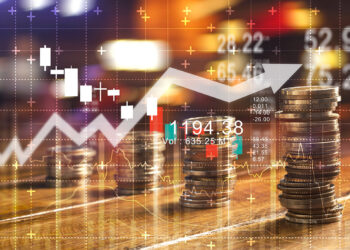Government-backed funding and renewed political focus on critical minerals have driven a fresh surge in investor activity, with experts calling it only the beginning of a long-term reshaping of supply chains.
The White House has confirmed that the United States and Australia intend to invest more than $3 billion in critical mineral projects over the next six months, with total recoverable resources estimated at $53 billion.
As well as this, the Export-Import Bank of the United States has issued seven letters of interest worth more than $2.2 billion, unlocking up to $5 billion in total investment, and the US Department of War will invest in a 100-metric tonne per year advanced gallium refinery in Western Australia, strengthening domestic and allied self-reliance in mineral processing.
Cameron Gleeson, senior investment strategist at Betashares, said the joint announcement between President Donald Trump and Prime Minister Anthony Albanese on mining and processing of critical minerals and rare earths is another example of state-based capitalism.
“President Trump has been willing to throw the support of the US government behind companies and industries that further his geopolitical aims, particularly during his second term,” Gleeson said.
He noted that the initial funding announced under the new framework is “modest and limited in terms of the companies it will impact”, but pointed to Albanese’s remark that “they are just getting started”, with billions more needed to secure supply chain independence for resources now viewed as strategically vital.
“Despite these tailwinds, the critical minerals ecosystem remains volatile,” Gleeson said. “While Australia remains an important source of these future-facing metals, investors should think globally. The US government will continue to support US producers, such as MP Materials.”
“Moreover, investors should be mindful that many individual miners and processors are pre-production, so this introduces project execution risk,” he added.
“Finally, investors should stay diversified across different minerals in this space, as investors will remember the boom-and-bust cycle associated with lithium.”
Reflecting investor interest in the sector, Betashares’ Energy Transition Metals ETF (XMET) has already reflected rising enthusiasm, returning 51 per cent over the past six months and drawing $3.6 million in inflows since January.
Assets across critical minerals ETFs now total $977.5 million and are expected to surpass $1 billion shortly.
The surge extends beyond institutional capital with data from AUSIEX showing a 300 per cent year-on-year increase in trading activity for strategic minerals and rare earths stocks on the ASX to mid-October 2025.
“Since April, we’ve seen demand for rare earth and strategic minerals stocks grow strongly, with October marking a dramatic spike in trades – up eleven-fold from September,” said Chris Hill, national manager of strategic relationships at AUSIEX.
“It was similar with advised and SMSF accounts, with 43 per cent of all trades done for SMSFs in the first half of October comprising strategic mineral-related stocks – with, interestingly, a large number of these undertaken by retirees or pre-retiree accounts.”
Hill added that top buys have included Lynas Rare Earths, American Rare Earths, Arafura Rare Earths, Australian Strategic Materials, Brazilian Rare Earths, Iluka Resources, and St George Mining.
“This surge isn’t just about global headlines – local investors are actively reshaping their holdings,” he said.
“We’re seeing investors, including advised and SMSF investors, pivot toward these sectors, reflecting growing confidence in Australia’s role as a strategic minerals powerhouse.”






